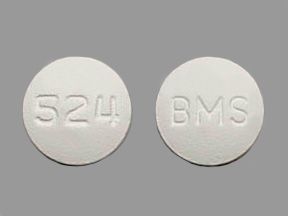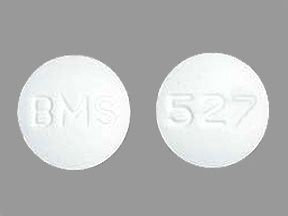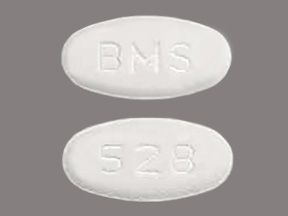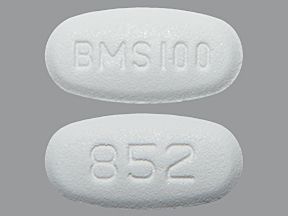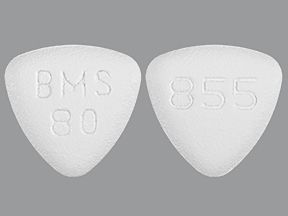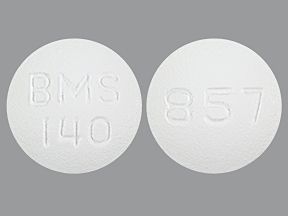If you have leukemia, your doctor may prescribe Sprycel for you.
Leukemia is a form of cancer that affects the blood or bone marrow. (Bone marrow is the tissue inside your bones that makes blood cells.)
Sprycel is used in adults and some children. It’s used to treat certain forms of leukemia, including:
For more details about how Sprycel is used to treat these conditions, see the “Is Sprycel used for CML?” and “Is Sprycel used for other conditions?” sections below.
Sprycel basics
Sprycel is a prescription medication that contains the active drug dasatinib. It belongs to a group of drugs known as kinase inhibitors.
Sprycel comes as a tablet that you’ll take by mouth, usually once daily.
Sprycel is only available as a brand-name drug. It isn’t available in a generic form.
Read on to learn about Sprycel’s side effects, uses, and more.
Like most drugs, Sprycel may cause mild or serious side effects. The lists below describe some of the more common side effects that Sprycel may cause. These lists don’t include all the possible side effects.
Keep in mind that side effects of a drug can depend on:
- your age
- other health conditions you have
- other medications you are taking
Your doctor or pharmacist can tell you more about the potential side effects of Sprycel. They can also suggest ways to help reduce any side effects.
Mild side effects
Here’s a short list of some of the mild side effects that Sprycel can cause. To learn about other mild side effects, talk with your doctor or pharmacist, or read Sprycel’s patient information.
Mild side effects of Sprycel reported in adults and children taking the drug by itself include:
- buildup of fluid in the body
- diarrhea
- headaches
- skin rash*
- feeling short of breath
- fatigue (lack of energy)
- nausea
- pain in the bones and muscles
- hair loss*
Certain mild side effects that have been more commonly reported in children taking Sprycel with chemotherapy include:
- mucositis (sores or redness inside your mouth, throat, stomach, or intestines)
- fever
- vomiting
- belly pain
- cough
- constipation
- blood pressure changes
- decreased appetite
- nosebleeds
- numbness or tingling in the hands or feet
- confusion
Mild side effects of many drugs may go away within a few days or a couple of weeks. But if they become bothersome, talk with your doctor or pharmacist.
* For more information about this side effect, see the “Side effect focus” section below.
Serious side effects
Serious side effects of Sprycel can occur, but they aren’t common. If you have serious side effects from the drug, call your doctor right away. However, if you think you’re having a medical emergency, you should call 911 or your local emergency number.
Serious side effects of Sprycel that have been reported include:
- myelosuppression (low blood cell counts, including those of white blood cells, red blood cells, and platelets)
- low white blood cell count together with fever, which is more common in children taking Sprycel with chemotherapy
- severe fluid buildup in the body
- tumor lysis syndrome (a condition in which dying cancer cells release harmful chemicals into the blood)
- heart problems, such as heart attack or abnormal heartbeat*
- lung problems, including pulmonary hypertension (high blood pressure in your lungs)*
- severe skin rash, such as Stevens-Johnson syndrome*
- slowed growth in children*
- allergic reaction*
* For more information about this side effect, see the “Side effect focus” section below.
Side effect focus
Learn more about some of the side effects that Sprycel may cause.
Long-term side effects of Sprycel
It’s possible that some side effects of Sprycel can cause long-term or permanent damage to your body.
For instance, heart problems are a less common but serious side effect of Sprycel. And they can lead to long-term effects. If you have a heart attack or an abnormal heartbeat while you’re taking this medication, any heart damage that occurs could be permanent.
Pulmonary hypertension (high blood pressure in your lungs) is another less common but serious side effect of Sprycel. If you develop this condition, the damage to your lungs could be long term or permanent.
Another long-term side effect of Sprycel pertains to young children. Sprycel can slow or reduce bone growth and development. Children taking Sprycel at an early age could be significantly shorter and smaller than other children of their age.
What might help
If you’ve developed long-term side effects of Sprycel, talk with your doctor about treatment options.
For example, if your lungs become damaged due to pulmonary hypertension, your doctor will likely prescribe treatments. These can help ease any related symptoms, such as breathing problems.
During treatment with Sprycel, your doctor will order blood tests often. These and other tests help them evaluate whether you’re having any side effects and how well the treatment is working for you.
Hair loss
Hair loss was a less common side effect of Sprycel in studies.
A small study looked at skin-related side effects of Sprycel. Both scalp and body hair loss occurred in adults taking the drug for chronic myelogenous leukemia. In this study, the average length of time between starting the drug and having hair loss was about 7 weeks.
What might help
If you have hair loss with Sprycel, these tips may help prevent further hair loss:
- Eat a healthy, balanced diet. This ensures that your body is receiving enough nutrients to support healthy hair growth.
- Ask if you should take a multivitamin or another dietary supplement that helps with hair growth. The doctor may recommend this if you’ve been unable to maintain a healthy diet or if you prefer the convenience of taking supplements.
- Avoid tight ponytails and other hairstyles that put extra pressure on your scalp.
If you have questions about hair loss with Sprycel, talk with your doctor.
Rash
Skin rashes can occur with Sprycel. These rashes may be mild, serious, or a symptom of an allergic reaction. (For more information about allergic reactions, see the very next section below.)
Rarely, people who’ve taken Sprycel have had a severe type of rash known as Stevens-Johnson Syndrome (SJS). Symptoms of SJS can include:
- skin spots that may appear red or dark
- fever
- open blisters on the mouth or other skin
- sore throat or mouth
What might help
Mild rashes from Sprycel usually go away on their own. But if you have a rash that doesn’t go away, talk with your doctor about it. They may recommend a corticosteroid or an antihistamine to help relieve any itching related to the rash.
If you think you’ve having a severe rash or an allergic reaction, call 911 or your local emergency number.
Allergic reactionSome people may have an allergic reaction to Sprycel.
In studies of Sprycel, allergic reactions were reported in children more often than in adults. Specifically, children who had allergic reactions to the drug were taking the treatment for a certain type of acute lymphoblastic leukemia.
In these studies, the children were also receiving a chemotherapy drug regimen. So, it wasn’t possible to determine the exact cause of their allergic reactions based on these reports.
Symptoms of a mild allergic reaction can include:
- skin rash
- itchiness
- flushing (temporary warmth, redness, or deepening of skin color)
A more severe allergic reaction is rare but possible. Symptoms of a severe allergic reaction can include swelling under your skin, typically in your eyelids, lips, hands, or feet. They can also include swelling of your tongue, mouth, or throat, which can cause trouble breathing.
Call your doctor right away if you have an allergic reaction to Sprycel. But if you think you’re having a medical emergency, call 911 or your local emergency number.
Costs of prescription drugs can vary depending on many factors. These factors include what your insurance plan covers and which pharmacy you use.
If you have questions about how to pay for your prescription, talk with your doctor or pharmacist. You can also visit the Sprycel manufacturer’s website to see if they have support options.
Your doctor will explain how you should take Sprycel. They’ll also explain how much to take and how often. Be sure to follow your doctor’s instructions. Below are commonly used dosages, but always take the dosage your doctor prescribes.
Taking Sprycel
Sprycel comes as a tablet that you’ll take by mouth.
It’s available in several strengths: 20 milligrams (mg), 50 mg, 70 mg, 80 mg, 100 mg, and 140 mg.
Dosage
You’ll likely take Sprycel once a day.
You should take Sprycel once in the morning or once in the evening. It doesn’t matter what time of day you take the drug, as long as it’s around the same time each day. This keeps a steady amount of the drug in your system.
Your doctor will prescribe the dosage of Sprycel that’s best for your condition. For children, their dosage is based on their body weight.
Taking Sprycel with other drugs
For children ages 1 year and older with newly diagnosed Philadelphia chromosome-positive acute lymphoblastic leukemia (Ph+ ALL), Sprycel is taken in combination with chemotherapy.
Some common examples of chemotherapy that may be prescribed with Sprycel for this condition include:
- vincristine or liposomal vincristine (Marqibo)
- daunorubicin (Cerubidine)
- doxorubicin
If you’d like to know more about Ph+ ALL and how Sprycel is used for it, see the “Is Sprycel used for other conditions?” section below.
Questions about taking Sprycel
Here are some common questions and answers about how you should take Sprycel.
- What if I miss a dose of Sprycel? If you miss your dose of Sprycel, just skip the missed dose. Then, take your next dose at your regular time. Don’t take two doses at the same time. You can try using an alarm or medication reminder app to help you remember to take Sprycel once daily.
- Will I need to take Sprycel long term? Yes, Sprycel is meant to be a long-term treatment. Your doctor will likely prescribe it for you long term, unless you develop severe side effects or your condition worsens.
- Can Sprycel be chewed, crushed, or split? No, you shouldn’t crush, chew, or cut Sprycel tablets. You should swallow the tablets whole.
- Should I take Sprycel with food? You can take Sprycel with or without food.
- How long does Sprycel take to work? Sprycel begins working shortly after you start taking it. Your body may begin to respond to the drug within 1 to 2 months. Some people who took Sprycel had a complete response (no sign of cancer cells in two bone marrow tests). This result was seen after about 3 months of treatment, in studies. Your doctor can check your response by testing your blood or bone marrow.
Questions for your doctorYou may have questions about Sprycel and your treatment plan. It’s important to discuss all your concerns with your doctor.
Here are a few tips that might help guide your discussion:
- Before your appointment, write down questions like:
- How will Sprycel affect my body, mood, or lifestyle?
- Bring someone with you to your appointment if doing so will help you feel more comfortable.
- If you don’t understand something related to your condition or treatment, ask your doctor to explain it to you.
Remember, your doctor and other healthcare professionals are available to help you. And they want you to get the best care possible. So don’t be afraid to ask questions or offer feedback about your treatment.
Learn answers to some commonly asked questions about Sprycel.
How does Sprycel work?
Sprycel contains the active drug dasatinib. It belongs to a group of drugs known as kinase inhibitors, which are a type of targeted therapy. These drugs work on specific targets in the body.
Sprycel works by inhibiting (blocking) the actions of a type of protein called an enzyme. The enzyme that Sprycel targets is a kinase.
Specifically, the drug’s mechanism of action is to inhibit the BCR-ABL kinase. By blocking this kinase, Sprycel stops certain cancer cells from growing and spreading.
Does Sprycel cause any eye-related side effects?
Most people who take Sprycel don’t have eye-related side effects. But, eye-related side effects have been reported in some people taking the drug.
In studies, more common eye-related side effects of Sprycel included:
- worsened eyesight
- blurred vision
- eye dryness
Less common eye-related side effects reported in studies included:
- conjunctivitis (eye redness and inflammation)
- watery eyes
Rarely, increased sensitivity to light was also reported in studies.
If you’re concerned about eye-related side effects of Sprycel, talk with your doctor. They’ll discuss the benefits of the medication for your condition and weigh them against the risks.
Can Sprycel’s side effects lead to death?
Sprycel may cause rare but serious side effects. And although deaths in studies were very rare, four deaths did occur as a result of these serious side effects.
These deaths seemed to be related to Sprycel’s serious side effect called myelosuppression. But there may have been other causes.
With myelosuppression, your blood cell counts become too low. As a result, your risk for certain serious side effects increases, depending on the type of blood cell count that’s reduced.
For instance, when white blood cell levels are reduced, your risk for infection increases. Studies reported three deaths from serious infections in children who took Sprycel. And when platelet levels are reduced, your body is more vulnerable to bruising and bleeding. Studies reported one death from heavy brain bleeding in an adult who took Sprycel.
It’s also important to note that leukemia, which Sprycel is used to treat, is known to increase the risk of life threatening infections and bleeding.
To reduce your risk of these serious events, your doctor will regularly check your blood cell counts with certain tests. If your blood counts become low, your doctor may recommend treatment. Or they may pause or stop treatments, such as Sprycel, that could be lowering your blood counts.
If you have questions about your risks and Sprycel’s side effects, talk with your doctor.
Will I have withdrawal symptoms if I stop taking Sprycel?
No, you won’t have withdrawal symptoms if you stop taking Sprycel. But don’t stop taking this medication before you talk with your doctor about it.
Is Sprycel a chemotherapy drug?
No, Sprycel is used to treat certain types of leukemia, but it isn’t a chemotherapy drug.
Chemotherapy drugs work by killing cells that grow and multiply rapidly, including cancer cells. (Cells that multiply are making more cells.) But chemotherapy drugs are nonspecific, so they may also kill healthy cells that grow and multiply rapidly, such as hair follicle cells. This is why some chemotherapy medications cause side effects such as hair loss.
Sprycel is a type of targeted therapy called a kinase inhibitor. These drugs work on specific targets in the body.
Sprycel blocks a certain kinase enzyme (a type of protein). This blockage stops certain cancer cells from growing and spreading.
Sprycel is used to treat certain forms of chronic myeloid leukemia (CML) and acute lymphoblastic leukemia in adults and children. To learn more about these conditions, see the “Is Sprycel used for CML?” and “Is Sprycel used for other conditions?” sections below.
There are some important things to discuss with your doctor when considering treatment with Sprycel. Make sure to discuss your overall health, health history, and any medical conditions you may have.
Interactions
Taking medications, vaccines, foods, and other things with a certain drug can affect how the drug works. These effects are called interactions.
Sprycel has several known interactions with medications, herbal supplements, and certain foods.
Before taking Sprycel, be sure to tell your doctor about all the medications you take, including prescription and over-the-counter types. Also let them know about any vitamins, herbs, or supplements you use. Your doctor or pharmacist can tell you about any interactions that these products may cause.
Interactions with drugs
Sprycel can interact with several types of drugs, including:
- blood thinning medications
- certain antifungal drugs
- certain HIV medications
- certain heart medications
- certain seizure drugs
- acid reflux medications
This list does not contain all the types of drugs that may interact with Sprycel. Your doctor or pharmacist can tell you more about these interactions and any others that may occur with the use of Sprycel.
Other interactions
In addition to the drug interactions listed above, Sprycel may interact with certain foods and supplements. These interactions are described below.
Sprycel and food interactions
You shouldn’t eat grapefruit or drink grapefruit juice while taking Sprycel. Doing so can increase the level of the drug in your body. And this can increase your risk for side effects.
Sprycel and herb interactions
You shouldn’t use St. John’s wort while you’re taking Sprycel. St. John’s wort is an herbal remedy that’s commonly used for depression. It can interact with Sprycel and make the drug less effective.
Sprycel could also interact with other herbs. Be sure to tell your doctor or pharmacist about everything that you take, including over-the-counter drugs, herbs, and dietary supplements.
Warnings
Sprycel may not be right for you if you have certain medical conditions or other factors that affect your health. Talk with your doctor about your health history before you take Sprycel. Factors to consider include those in the list below.
- Heart problems. Be sure to let your doctor know if you’ve ever had problems with your heart or heartbeat. This includes any condition that affects your heart’s rhythm, such as long QT syndrome. Your doctor may not recommend Sprycel for you, as this drug could worsen your heart condition.
- Low potassium or magnesium levels. Low levels of potassium or magnesium in your blood can affect your heart. Since Sprycel can also affect your heart, it may not be safe to start taking this drug until your potassium and magnesium levels are corrected. Talk with your doctor about the best management option for you.
- Lactose intolerance. Sprycel contains lactose (milk sugar) as one of its inactive ingredients. Be sure to tell your doctor if you have an allergy or intolerance to lactose.
- Use in young children. Sprycel can slow or reduce bone growth and development in children. Taking Sprycel at an early age could make your child significantly shorter and smaller than other children their age. If you have questions about this risk, talk with your child’s doctor.
- Allergic reaction. If you’ve had an allergic reaction to Sprycel or any of its ingredients, you shouldn’t take this medication. Ask your doctor about other treatment options that would be better for you.
Use with alcohol
It’s best to limit the amount of alcohol you drink while you’re taking Sprycel.
There’s no harmful interaction known to occur between Sprycel and alcohol. But drinking too much alcohol could worsen some side effects of this medication, such as:
- diarrhea
- headache
- nausea
- fatigue (lack of energy)
If you drink alcohol, talk with your doctor about how much is safe for you to drink while taking Sprycel.
Pregnancy and breastfeeding
If you’re pregnant or breastfeeding, you shouldn’t take Sprycel. Sprycel might cause harm in a developing fetus or breastfed child.
If you or your partner is able to become pregnant, your doctor will recommend that you use birth control during your Sprycel treatment. And you’ll need to keep using birth control for at least 30 days after your last dose of the drug.
You should wait to breastfeed for at least 2 weeks after your last dose of Sprycel.
If you’re planning to become pregnant or breastfeed, tell your doctor before starting Sprycel. They’ll discuss other treatment options with you.
If you have leukemia, your doctor may prescribe Sprycel for you.
Leukemia is a form of cancer that affects the blood or bone marrow. (Bone marrow is the tissue inside your bones that makes blood cells.)
Sprycel treats two types of leukemia: chronic myeloid leukemia (CML) and acute lymphoblastic leukemia (ALL). To learn more about CML, read on. And to learn about ALL, see the next section below.
Sprycel is used to treat the following types of CML:
- Newly diagnosed CML that has a certain genetic mutation (abnormal change) called Philadelphia chromosome-positive (Ph+). For this use, the drug is given to adults who have Ph+ CML in the chronic phase (first stage of the disease).
- Ph+ CML in any stage. For this use, Sprycel is given to adults who have already tried treatment with imatinib (Gleevec), but it either didn’t work or caused bothersome side effects.
- Ph+ CML in the chronic phase. For this use, Sprycel is given to children ages 1 year and older.
With CML, cancerous cells fill bone marrow. As a result, there’s less room in bone marrow to produce normal blood cells. This increases the risk of life threatening infections and bleeding.
Chronic leukemia is a slow-growing cancer. Acute leukemia is a fast-growing cancer, and it progresses quickly if it’s not treated. In CML, your bone marrow makes too many white blood cells. In ALL, your bone marrow makes too many lymphocytes, which are a certain type of white blood cell.
For more information about the differences between CML and ALL, see this article.
Sprycel treats leukemia by targeting and blocking specific enzymes called kinases. By blocking these specific kinases, Sprycel stops certain cancer cells from growing and spreading.
If you have leukemia, your doctor may prescribe Sprycel for you.
Leukemia is a form of cancer that affects the blood or bone marrow. (Bone marrow is the tissue inside your bones that makes blood cells.)
Sprycel treats two types of leukemia: chronic myeloid leukemia (CML) and acute lymphoblastic leukemia (ALL). To learn more about ALL, read on. And to learn about CML, see the section just above.
Sprycel is used to treat the following types of ALL:
- ALL that has a certain genetic mutation (abnormal change) called Philadelphia chromosome-positive (Ph+). For this use, the drug is given to adults who have tried another treatment, but it either didn’t work or caused bothersome side effects.
- Newly diagnosed Ph+ ALL in children ages 1 year and older. For this use, Sprycel is given in combination with chemotherapy.
With ALL, cancerous cells fill bone marrow. As a result, there’s less room in bone marrow to produce normal blood cells. This increases the risk of life threatening infections and bleeding.
Acute leukemia is a fast-growing cancer, and it progresses quickly without treatment. Chronic leukemia, on the other hand, is a slow-growing cancer. In ALL, your bone marrow makes too many lymphocytes, which are a certain type of white blood cell. In CML, your bone marrow makes too many white blood cells.
For more information about the differences between ALL and CML, see this article.
Sprycel treats leukemia by targeting and blocking specific enzymes called kinases. By blocking these specific kinases, Sprycel stops certain cancer cells from growing and spreading.
Sprycel may also be used off-label to treat other conditions. (With off-label use, a drug that’s approved for certain conditions is used for a different condition). Talk with your doctor for more information.
Sprycel and imatinib (Gleevec) work in similar ways. Both medications belong to the same group of drugs: kinase inhibitors.
One of the main differences is their uses. For instance, Gleevec is used to treat several additional types of cancer, compared with Sprycel.
If you’d like to learn more about these two drugs, see a detailed comparison in this article. And be sure to talk with your doctor about which treatment is right for your condition.
Sprycel and nilotinib (Tasigna) are similar in their uses and the way that they work. Both medications belong to the same group of drugs: kinase inhibitors.
One of the key differences is their usual dosages. If you’re prescribed Sprycel, you’ll likely take it once daily. If your doctor prescribes Tasigna, you’ll likely take it twice daily.
To see a side-by-side comparison of these two medications, check out this article. And talk with your doctor about which drug they recommend for you.
Don’t take more Sprycel than your doctor prescribes. Taking more than this can lead to serious side effects.
Symptoms of overdose
An overdose of Sprycel may cause low levels of blood cells. Symptoms can include:
- low level of red blood cells, which can lead to fatigue (lack of energy)
- low level of white blood cells, which can increase your risk for serious infections
- low level of platelets, which can lead to severe bleeding
What to do in case you take too much Sprycel
Call your doctor if you think you’ve taken too much Sprycel. You can also call 800-222-1222 to reach the American Association of Poison Control Centers, or use their online resource. However, if you have severe symptoms, immediately call 911 (or your local emergency number) or go to the nearest emergency room.
If you have certain types of leukemia, your doctor may recommend treatment with Sprycel.
Keep in mind that this drug isn’t used for all types and stages of leukemia. For details about the conditions it’s used for, see the “Is Sprycel used for CML?” and “Is Sprycel used for other conditions?” sections above.
You can learn more about treatment options for chronic myeloid leukemia (CML) in this article. Or, you can read more about acute lymphoblastic leukemia in this article.
If you have questions about Sprycel, talk with your doctor or pharmacist. If you’re not sure what to ask, here are some ideas to help get your conversation started:
Q:
Is it safe for me to receive vaccines, such as the COVID-19 vaccine, while I’m taking Sprycel?
Anonymous patientA:
Getting certain vaccines may be safe while you’re taking Sprycel. But getting a vaccine while you’re taking this drug may decrease how well the vaccine works.
Live vaccines should not be used during Sprycel treatment. Examples of live vaccines include the measles, mumps, and rubella vaccine and the influenza vaccine that’s given as a nasal spray.
Live vaccines use a weakened form of the germ that causes the infection. If you’re exposed to a live vaccine, your body may not be able to fight off the infection while you’re taking Sprycel.
There are other types of vaccines, too. For instance, inactivated vaccines use a version of a germ that’s no longer alive. Examples of inactivated vaccines include:
- the hepatitis A vaccine
- flu vaccines given as an injection
Another type of vaccine uses messenger RNA (mRNA). These vaccines produce proteins in your body to trigger an immune system response. Some COVID-19 vaccines are mRNA vaccines.
It’s generally recommended that you complete any vaccine series, including the COVID-19 vaccine series, at least 2 weeks before you start taking Sprycel.
If you are interested in receiving vaccines, talk with your doctor. They can recommend if it’s OK for you to get a vaccine while you’re taking Sprycel.
Melissa Badowski, PharmD, MPH, FCCPAnswers represent the opinions of our medical experts. All content is strictly informational and should not be considered medical advice.Disclaimer: Healthline has made every effort to make certain that all information is factually correct, comprehensive, and up-to-date. However, this article should not be used as a substitute for the knowledge and expertise of a licensed healthcare professional. You should always consult your doctor or other healthcare professional before taking any medication. The drug information contained herein is subject to change and is not intended to cover all possible uses, directions, precautions, warnings, drug interactions, allergic reactions, or adverse effects. The absence of warnings or other information for a given drug does not indicate that the drug or drug combination is safe, effective, or appropriate for all patients or all specific uses.

